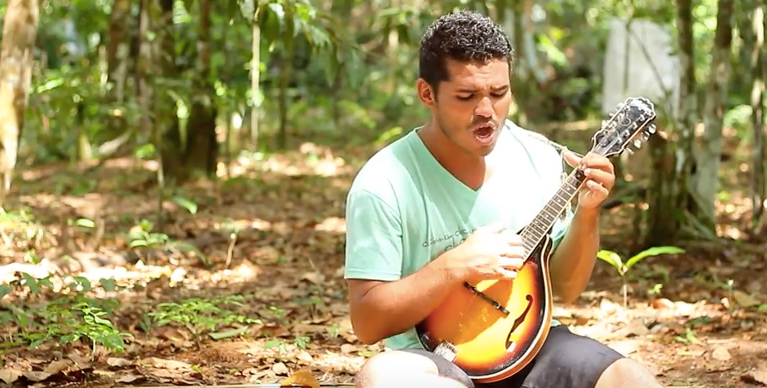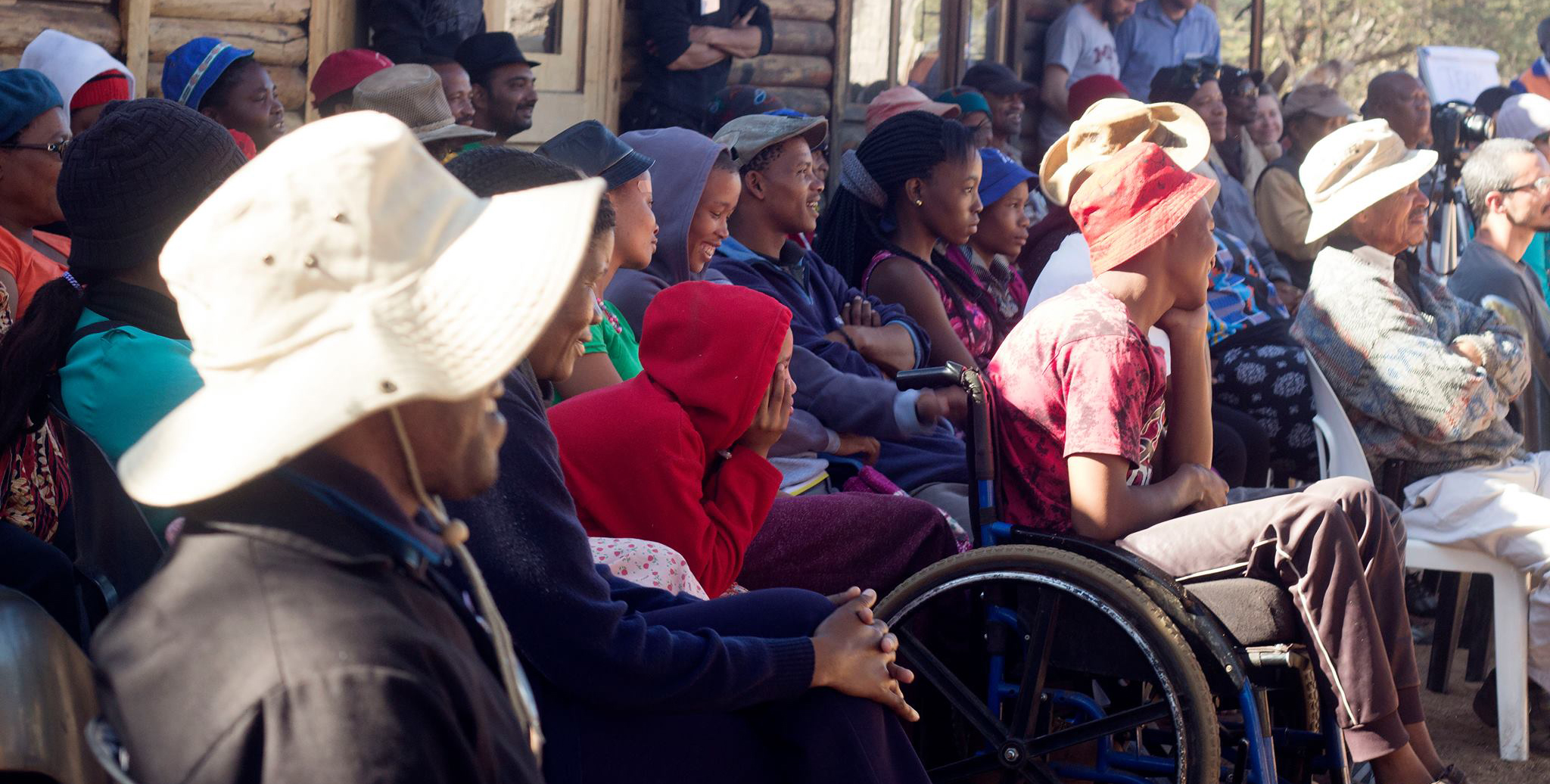Four Weeks: The Beginning of a Journey Toward Innovation on Healthcare In India
It’s been three weeks since 47 brilliant minds from 18 different countries had to say goodbye, leaving behind Chennai, India and their teams at IDDS Aarogyam, but taking with them four weeks of profound learning and cultural exchange.
During the course of a month at IDDS Aarogyam, a health-themed design summit organized by IDIN and HIVE InnoSpace, participants were involved in an immersive experience in which they started their days with sharing appreciations, problems, hopes, and dreams and ended those same days playing Carom Board or doing amazing henna designs. Sounds like fun, and it was! But what happened in between is what gave birth to eight prototypes that speak to the incredible capacity, diverse experience, and immeasurable dedication that each and every one of the participants brought with them to India to solve health problems in rural communities.
Lectures on the design cycle, local speakers, skill builders, community visits and prototyping sessions were some of the essential parts of the process through which the projects were conceived. These different activities marked both the participant experience and the summit´s results, including a fruitful engagement with health auxiliary workers at the Tribal Health Initiative and other communities, a deep exchange of diverse and exceptional professional experience, and a path forward for some of the projects and local participants with support from IDIN and HIVE InnoSpace.
The participants’ final presentation of the projects to their hosts at BS Abdur Rahman University, students, community members, and special guests marked the end of IDDS Aarogyam, but it also marked the beginning of a journey for the participants as IDIN Network members and active followers of a model in which concepts such as innovation and co-creation (creating with local communities) are key. We are confident that in following this path, each and every one of the members of the IDDS Aarogyam family will meaningfully contribute to the sustainable social impact that the IDIN Network is aiming to achieve—hurray to that!
Below you can learn more about the projects and prototypes from the eight teams:
“Sukh” — A Home-Based Care Medication & Diagnosis Delivery System
Elderly people in India struggle with limited mobility and chronic diseases like diabetes because of the inherent complexity and amount of time required to access medical care. Some patients may spend up to three or four hours at a healthcare center, spend a considerable sum getting there, and face physical mobility issues in getting there and back. In order to address this problem, the team created Sukh “a home-based care, medication and diagnosis delivery system that is aimed at elderly diabetic patients. Through our field research, the team identified over 2,000 elderly people in Kumuzhi and Karanai Puthuchery villages who have diabetes and are not able to access proper follow up care… These patients live in a district with 42,000 people and only one nurse. Our system will employ and equip specially trained field workers to provide this specialized care, thereby bridging the economic, geographic, and health-related gap that these patients face.” — Team report
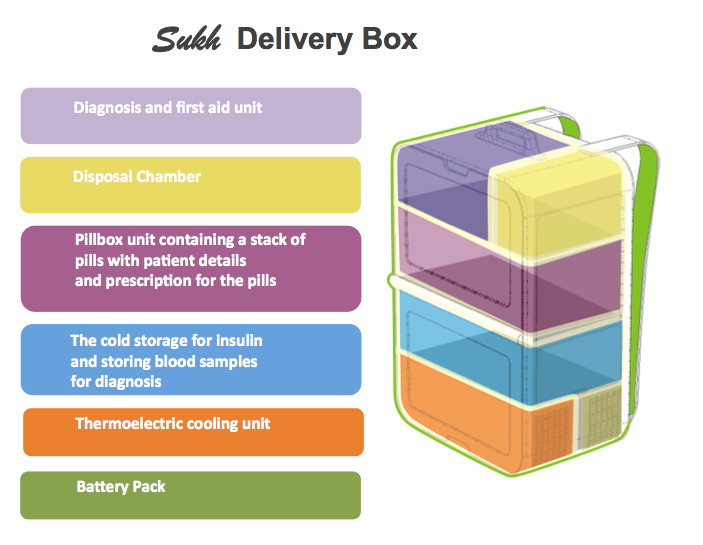 |
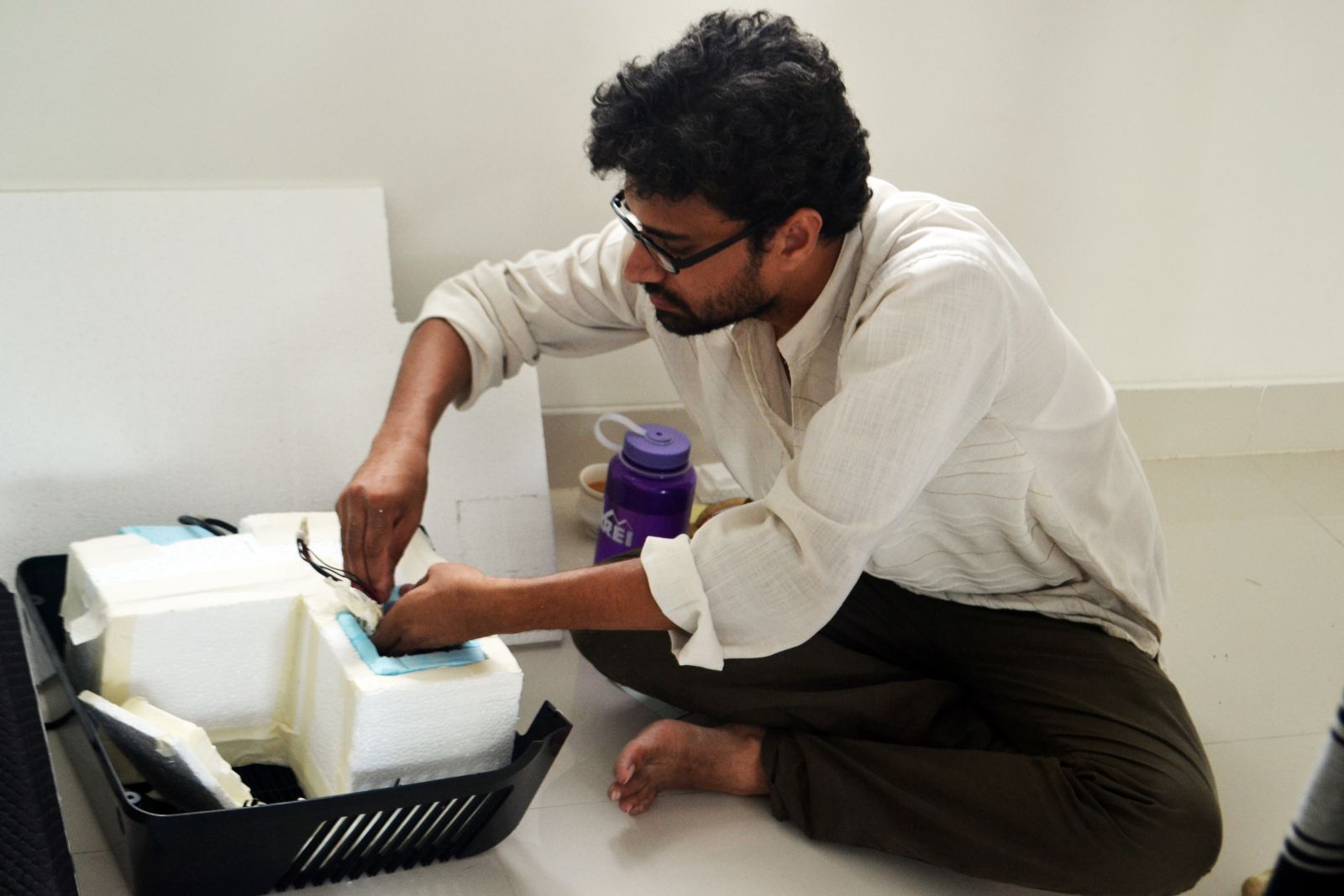 |
“ELAI” — A Multifunctional Child Safety Harness
“Research has shown that road traffic accidents are the second leading cause of death of 5-12 year olds in India. In addressing this problem, we aim to improve the safety of child passengers on motorcycles in Chennai, Tamil Nadu, and throughout India. During research and community visits in Chennai, our team learned of an alarming number of accidents when child passengers fell or were ejected from motorcycles due to the fact that proper safety harnesses are hard to find and seldom used. Due to these findings, our team decided to design a fashionable and multifunctional safety harness vest product targeted at Indian children under the age of 12. This safety harness vest includes impact absorption pads, and is breathable, easy-to-wear, cost-effective, expandable, accessible, and fashionable.” — Team report
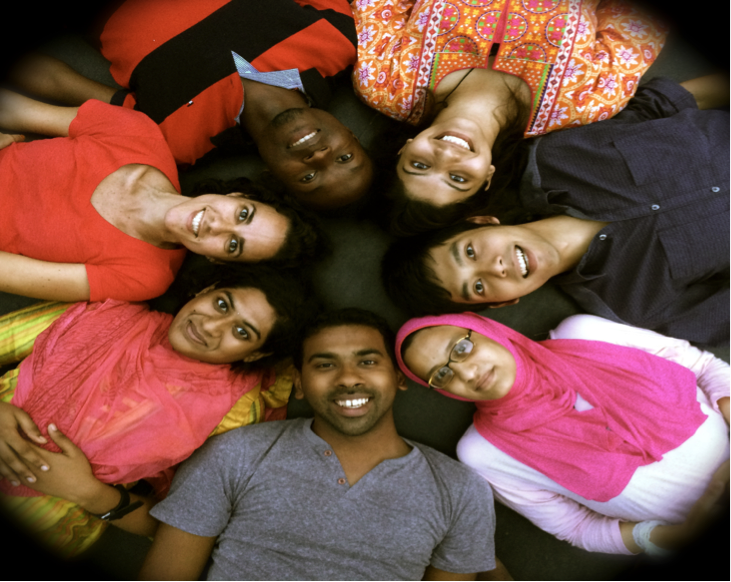 |
.png) |
Helping Babies Breathe — A Low-Cost Resuscitation Device for Newborn Care
In India, 26 million babies are born each year, and one million of those babies die in the first month of life. Out of these neonatal deaths, 230,000 are due to asphyxia and hundreds of thousands more suffer from lifelong brain damage caused by asphyxia. Given this situation, the team created a resuscitation device for newborn babies that is aimed at reducing neonatal mortality and brain damage due to asphyxia, delivering inspiratory and expiratory pressure thus preventing lung collapse, reducing likelihood of lung damage due to excessive pressure application, guiding the nurses or midwifes through audio to give sustained breaths and playing the newborn’s heart rate signaling a successful resuscitation. The device also includes a positioning pillow to improve airflow during resuscitation, and a heart rate monitor.
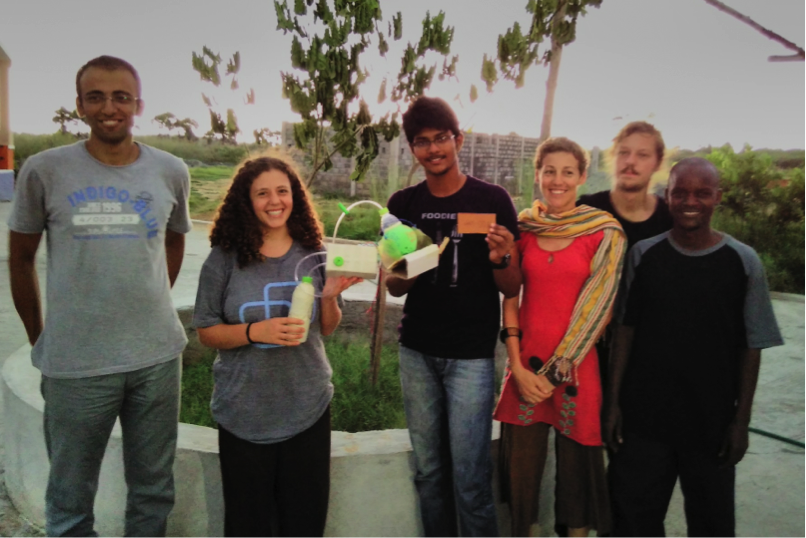 |
 |
“Baby TempIt” — Rethinking the Thermometer for Newborn Care
“Infant mortality and morbidity rates can be greatly reduced with early detection of the signs and symptoms of illness including infection and hypothermia during the first 28 days of life. Providing adequate training and tools to health auxiliary workers, who are often the first point of contact for rural populations, is a proven method to improve outcomes. Accurate temperature measuring and monitoring is a key identifier of illness, and simple tools to accurately measure the temperature of a baby are critical to this assessment.
Currently, there are no temperature measuring devices that meet the needs of health auxiliary workers with limited literacy or that are specific to the global health protocols for axillary temperature measurement of the newborn. Comprehensive, graphic training materials are also not available in low resource settings. Our team seeks to address these gaps by developing a simple and innovative temperature measurement device specific to the neonatal anatomy, accurate in its read-out, and appropriate for the health auxiliary workers in the home and village setting. Additionally, a training and informational graphic will be integrated with the measurement device to provide a comprehensive system that supports early detection.” — Team report
 |
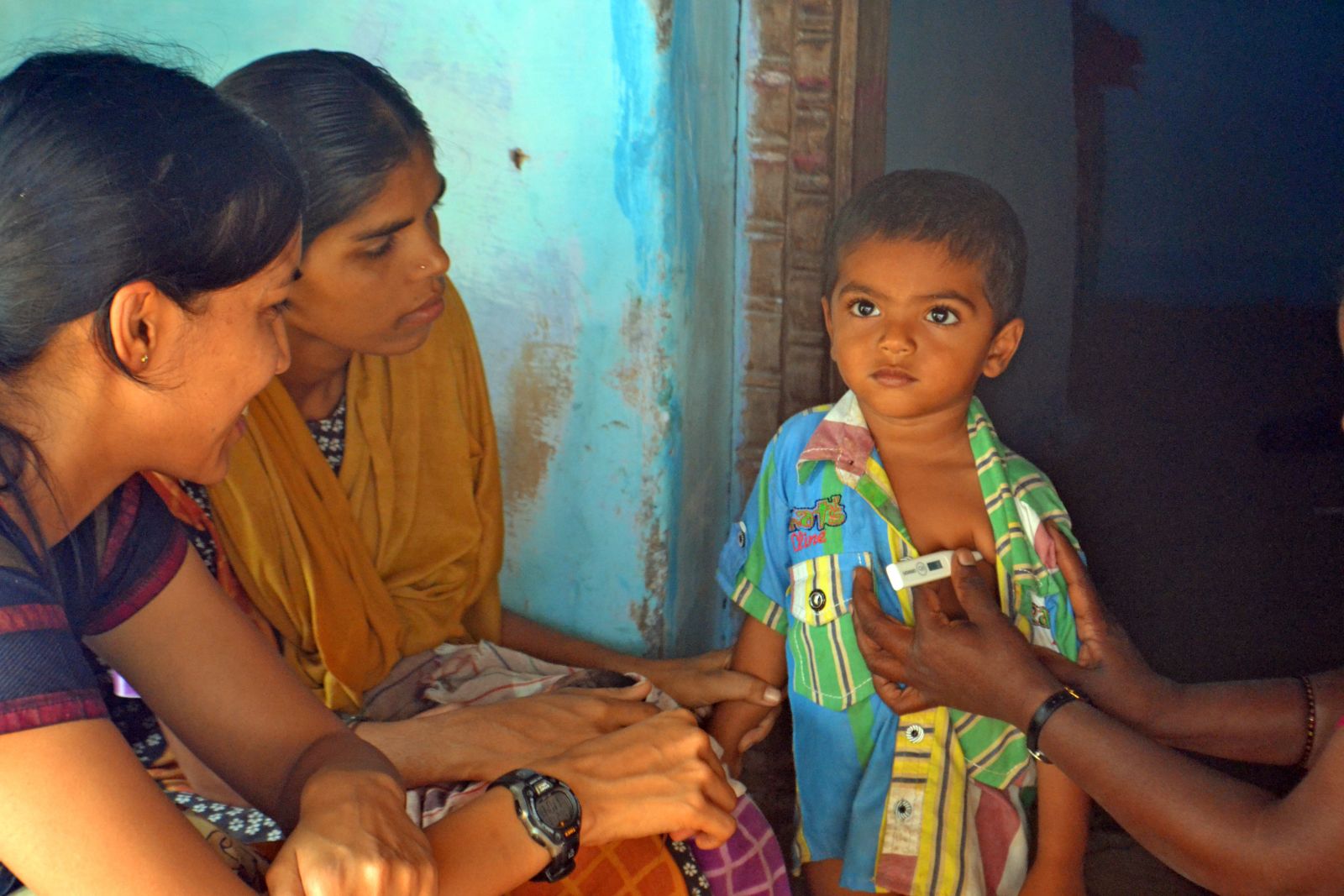 |
“PAGIR” — Decision-Making Tools for Birth Spacing
“Birth spacing—the planned interval between two pregnancies to improve the nutritional status of the mother and child—is widely practiced in Southern India. Our project investigated the knowledge, attitudes and practices of married men and women living in Manamathy village pertaining to birth spacing. Our design solution aims to fill the gap between the need for desirable and effective birth spacing methods and access to contraceptives.
First, we have designed a communication tool for the village health nurse to introduce contextually appropriate birth spacing methods according to family specific parameters. Secondly, we have ideated a low cost contraceptive container, designed to remind the couple about their personal commitment to maintain the gap of birth spacing and makes contraceptives readily available secretly near the bedside. The project is planned to be continued with support from community leader Dr. Sujata and could be applied in different cultural contexts.” — Team report
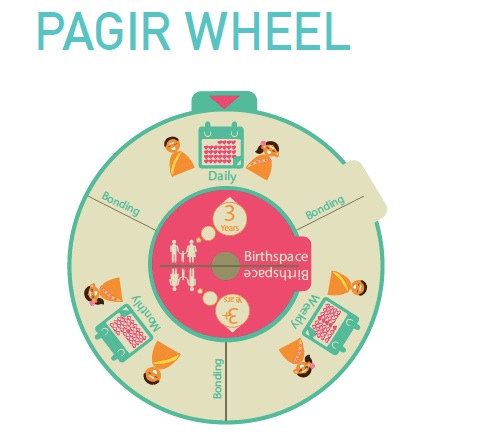 |
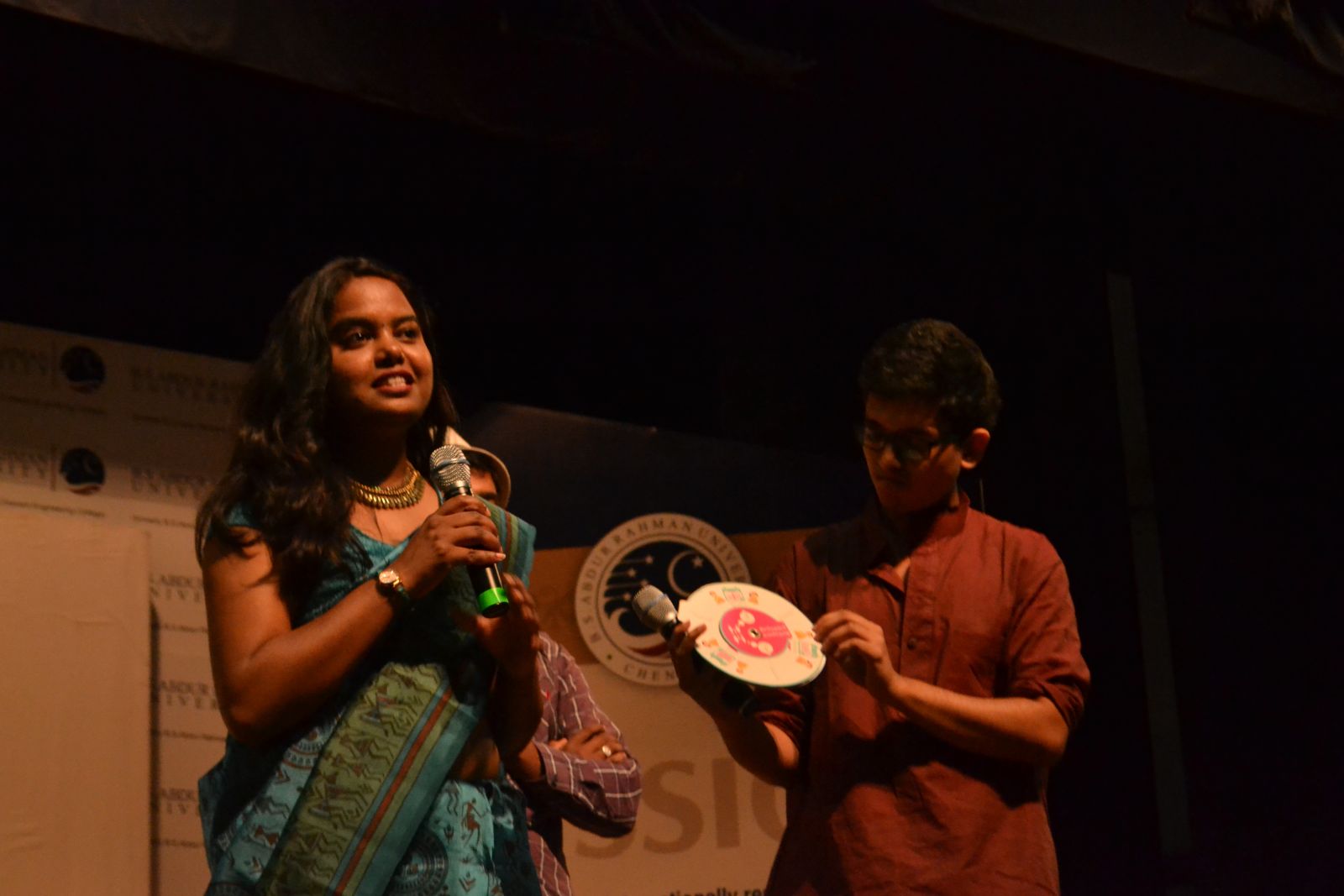 |
“The SMART Box” — Reducing Risk of Infection & Contamination at Health Centers
“Patient traffic to primary health centers in the Chengalpattu region of Tamil Nadu typically ranges from 150 to 200 people per day. According to nurses, a quarter of these daily visits are from patients who require dressing of wounds and injuries. These individuals are at risk to acquire infections from the health center due to improper procedures or contamination of tools and equipment. The Sanitary Materials and Resources Tool Box, or SMART Box for short, is a simple, handy organizational tool for wound treatment equipment and supplies that reduces the risk of contamination, while facilitating health worker’s productivity. This device strives to help healthcare providers limit their movement during wound treatment procedures, which reduces risk of contamination, while providing a convenient and easy-to-use system tailored to their work flow.” — Team report
 |
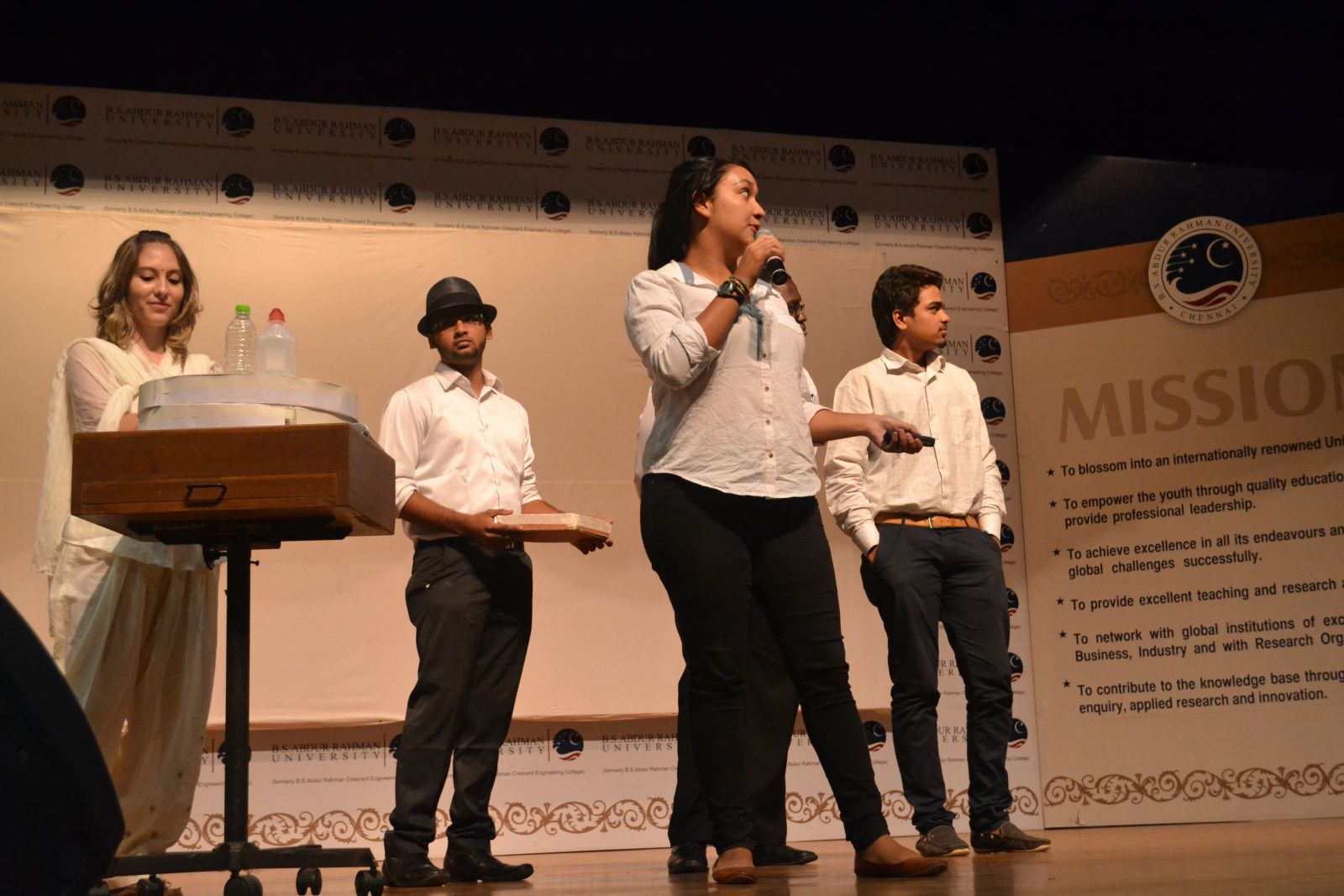 |
“Stay Pink” — Introducing Iron in Drinking Water to Prevent Anemia
Kuthambakkam is a role model village, but has a high incidence of anemia where people’s rigid consumption habits impede them from having an iron-rich diet. For this reason, the Stay Pink team created a prototype of a water dispenser with two basic components: an iron dispensing component which releases the required amount of iron for fortification and a siphon system which allows control of the time a fixed volume of water is exposed to the dispenser. In the future, the team hopes that the iron dispenser will be combined with traditional water filters.
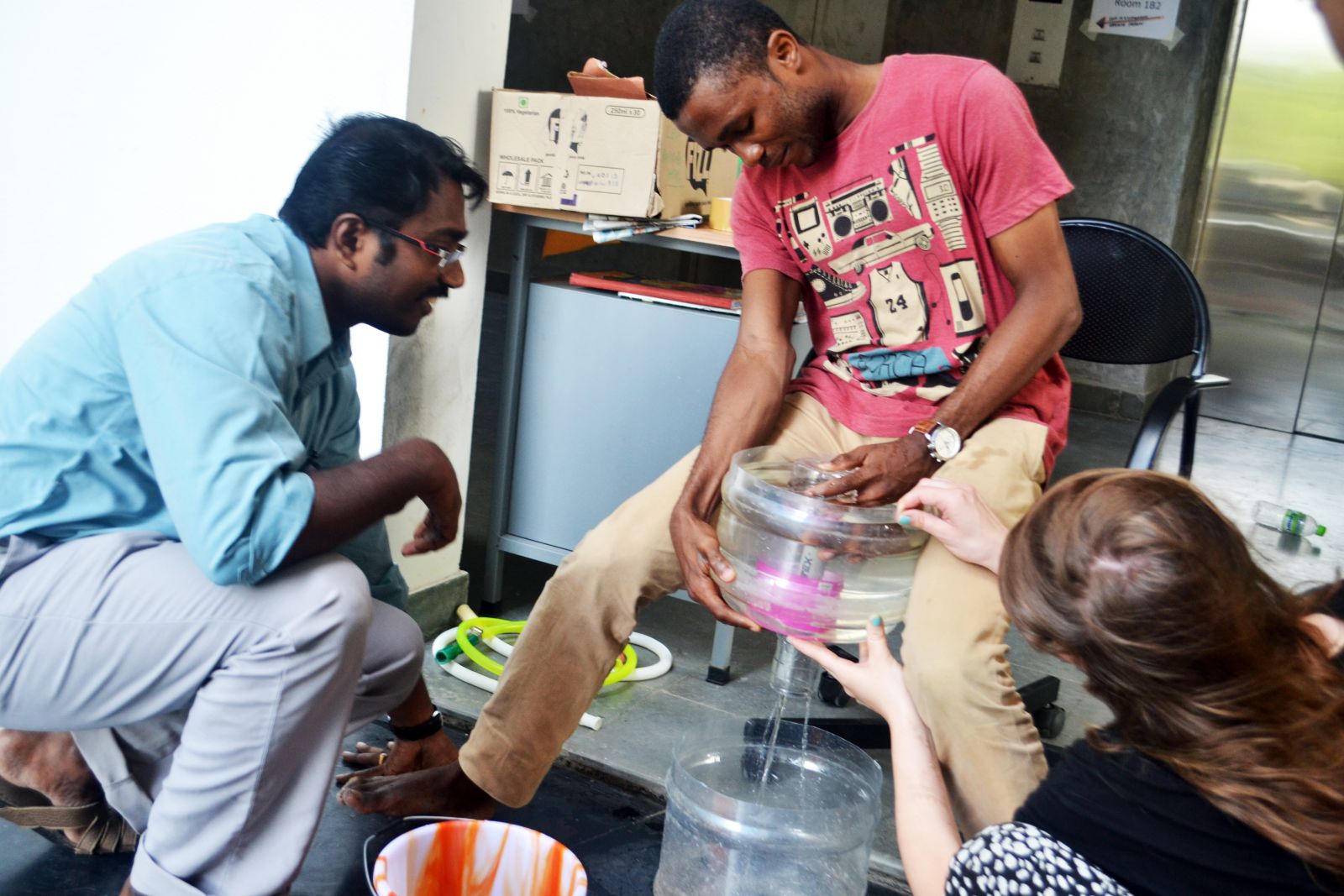 |
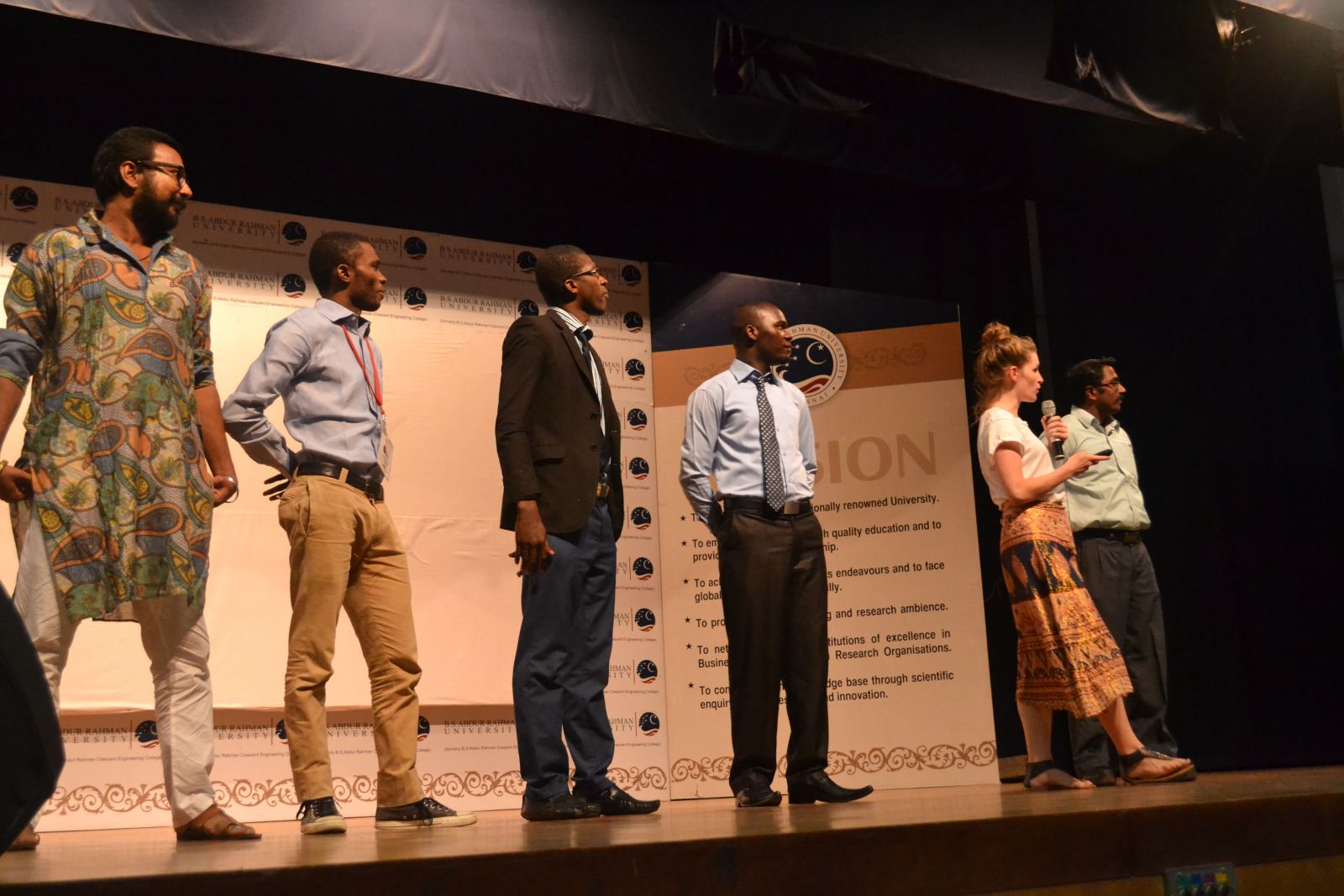 |
“Thalir” — A Growth Measuring & Recording System to Combat Malnutrition
The Sittilingi Valley, home to a large number of tribal communities, faces a serious nutrition issue: around 90% of 4-6 year olds are underweight in the region. Added to this is the fact that more than 50% of tuberculosis cases in India are influenced by malnutrition and 88% of people in the valley are farmers. According to the team’s report, “Thalir is a growth measuring and recording system that provides contextually appropriate treatment and education, designed to combat malnutrition in the region and hopefully, across the world.” The system includes a slider for standardization of diagnostic qualitative malnutrition symptoms, a mirror for patients to see their symptoms compared to standard, locally available treatment and education material slides out after diagnosis, an automatic recording into WHO’s Growth Chart, a measuring system for height and weight of children and an expandable platform for baby length measurement. This project was co-created with the Tribal Health Initiative, a hospital that provides 33 local tribal villages with healthcare and health education.
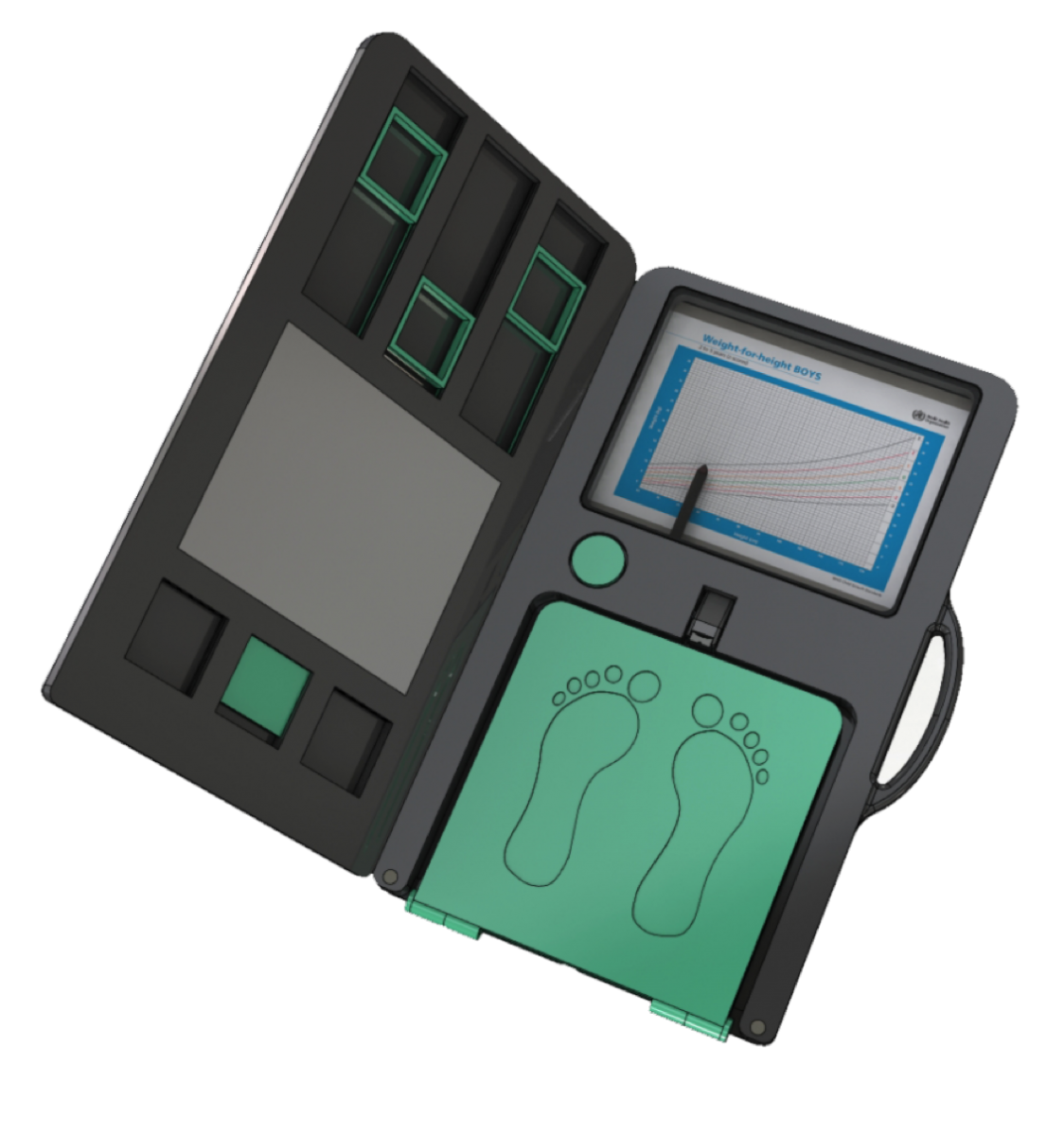 |
 |
Jimena Espinosa is a 2015 IDDS Monitoring and Evaluation Fellow who attended IDDS Aarogyam to help IDIN track, measure, and learn from this year’s design summits.





